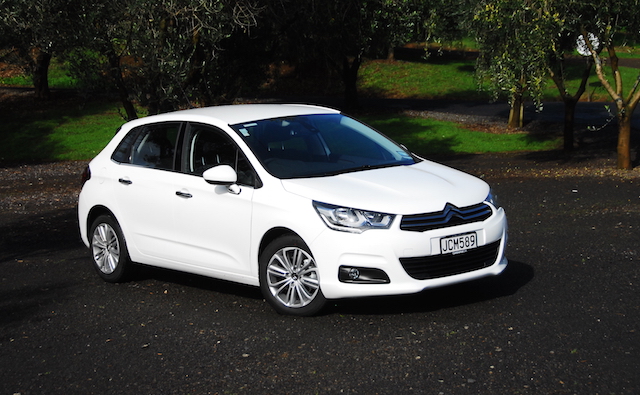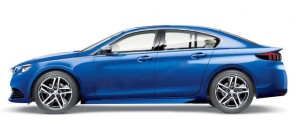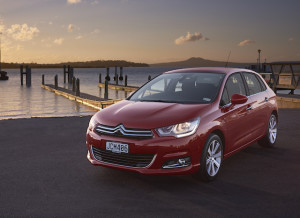
French brands Peugeot and Citroen have both made it clear they want to move upmarket, Peugeot going in a new direction with sportier models such the 308 GTi and the four-door 408 GT, and Citroen with its breakaway DS line, a badge it wants to make fully functioning in its own right.
But both companies want to retain their modest share of the middle ground in New Zealand. Peugeot’s slice is bigger than Citroen’s – has been for years. However, Citroen’s market share has grown each year for the past four, and its growth over the past two years has far exceeded that of its partner. The DS line will get off the ground early next year.

What the NZ head of all three brands wants now is to better position them, juggling the appeal of one with that of the others. He describes the challenge as a “delicate balancing act, with a period of consolidation before growth.”
Simon Rose is the divisional manager of Peugeot/Citroen/DS distributor Sime Darby Automobiles NZ (SDANZ). It’s a new role after the company was restructured to work closer with Australia.
Up until recently Rose was the divisional manager for Citroen NZ and Todd Groves the divisional manager for Peugeot. Both men reported to SDANZ general manager and longtime NZ industry executive Grant Smith. Smith and Groves left in the reshuffle.
Rose is now in charge and will report on sales progress on this side of the Tasman to his Australia/NZ general manager/director John Startari. Does the new order mean the NZ operation is now an Australian branch office?

The Australians don’t reckon so, nor does Rose. Sime Darby’s people across the ditch say the “NZ business and product ranges remain independent and suited to the NZ market.”
Rose reckons the new set-up provides a much leaner operation, bringing both Peugeot and Citroen brand teams together. “For a start it will enable us to shrink overheads in New Zealand,” he said. “We will be able to leverage some of Australia’s buying power and share some resources. That means a better outcome for Kiwi consumers.
“We’ll do what’s right for Kiwis and make sure we retain our own identity. We are not a state of Australia. We can’t just take the vehicles Australia gets and dump them here. But we can simplify and rationalise the range for New Zealanders and get indent (special order) models via Australia if we so desire.”
High on Rose’s list of priorities are SUVs, the more the merrier. “We need more SUVs to seriously compete in New Zealand,” he said. “We will be looking what’s on offer. Right now we are entering a period of consolidation.
“It will take six months or so to realise all the benefits before we start sustained growth – 2016 will be a stronger year and new SUVs, hot hatches and sports coupes are all under consideration but yet to be formalised.”
The first car to land under Rose’s watch is the Citroen C4 (top), a hatchback rival of sorts to the in-house Peugeot 308. The C4 is a mid-life model, sitting on the same chassis as before but with upgrades here and there, including the use of more materials to cut road noise.
Its biggest advance is its powertrain. The old 1.6-litre four-cylinder engine and four-speed automatic gearbox has been replaced by the boosted 1.2-litre engine and six-speed ‘box from the Peugeot 308.

The new powertrain transforms the C4. The 1.6-litre generated 88kW at 6000rpm and 160Nm at 4250rpm, old-fashioned output further handicapped by an old-fashioned gearbox. Citroen claimed town-and-around fuel use of 7 litres/100km (40mpg).
The new turbocharged three-cylinder unit delivers 96kW at 5500rpm and 230Nm at 1750rpm, peak torque arriving fully 2500rpm lower in the rev range. The six-speed auto’ thrives on the flexible torque delivery, sliding unstressed time after time into a ratio to match engine revs. Citroen claims fuel use of 4.7 litres/100km (60mpg).
The ride/handling mix in the C4 isn’t as dynamic as the class-leading 308, which sits on the Peugeot EMP2 chassis, one of the very best platforms in the segment. But it nevertheless remains accurate and comfortable. The next-generation C4 will pick up the EMP2 chassis.
Meantime, the updated C4 is aimed at a loyal target audience, mostly on the other side of 45-50 years of age. There is only one model, priced at $34,990, and nine exterior colours.
Once, there might have been 11 models and 11 colours, but this is a time of new beginnings. “Having 11 variants of the one vehicle doesn’t make sense to us these days,” says Rose.
